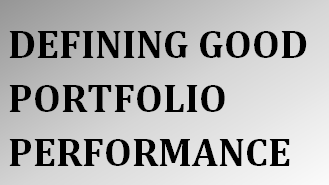
It just creates curiosity, everyone who gets this card in hand asks me what you just asked. It gives me an opening. He went on to ask: what is your targeted return? If you are aiming to make 24% return, I will tell you a different time horizon and asset allocation than in case of 12% return. For 8% I can give you post dated cheques.
You can simply not define good portfolio performance before you have 2 things clear:
- How much time will you give your portfolio.
- How much of your capital can you you put to risk of losing.
Time is easy assess, it is Risk which most people go wrong with. Let me make a disclosure. I like 25 stocks right now. Almost all of the portfolios that I manage have some or all of these stocks but none of them have anything from outside of this list. The difference in various portfolios is the amount of cash and short positions I am holding. Since 31 January 2018, the worst of my portfolio is down by 9% and the best of it is up by 18% (let me know if your returns fell outside of this range). From my perspective, all of these portfolios are performing well given what I had set out to achieve for each of them. To say we all wanted to make 18% last week would be grave injustice to someone’s ability to take risk.
Point: Know what you are doing before you judge your portfolio performance (or that of your fund manager).
If you started as a trader and now call your portfolio as value picks or if you are regularly trading your value stocks you are unlikely to benefit from the market. You have a better chance by sticking to doing what you do. I have never been very clear about the idea of value so I call it Portfolio of Growth stocks. These days, I find a lot of funds have misleading allocations.
Be that as it may, a good long term portfolio of growth / value oriented stocks making annualised return of 18%+ is extremely good performance. Naturally, you will have negative returns in some years and a good yardstick will be to look at average returns for at least 5 years. This is best explained by my friend Kalpen with this tweet:
For someone who is a trader, more than returns a better yardstick will be to look at the capital with which he is generating that kind of return.


Please inform all your latest advice
Please subscribe here – http://www.sanasecurities.com/subscription